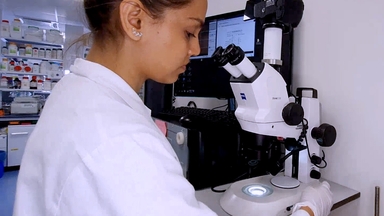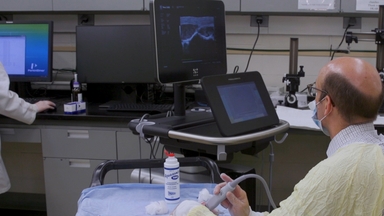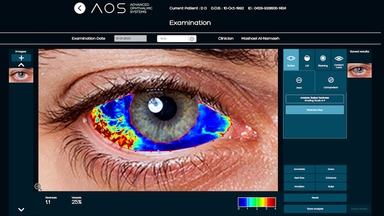A Technique to Induce Chronic Experimental Autoimmune Dry Eye in Rats
Transcript
Take a rat previously immunized with an antigen-adjuvant emulsion containing lacrimal gland-derived autoantigens and foreign antigens.
Re-inject the emulsion and intraperitoneally inject pertussis toxin, ensuring maximal T cell activation.
Activated cells differentiate into circulating effector memory T cells, TEMs and tissue-resident memory T cells, TRMs. A percentage of TRMs resides in ocular surface tissues.
After a defined interval, inject the antigens into the forniceal sub-conjunctiva and lacrimal glands, inducing localized inflammation.
Subconjunctival antigen-presenting cells, APCs, present antigens to the TRMs, triggering cytokine release.
Cytokines induce conjunctival epithelial cells to release chemokines, which recruit TEMs.
APCs reactivate the infiltrated TEMs, triggering proinflammatory cytokine release.
Cytokines cause the death of mucin-producing conjunctival goblet cells, decreasing mucin levels, and causing tear film instability.
Cytokines induce lacrimal gland cell death — reducing tear production — and stimulate corneal epithelial cells to produce matrix metalloproteinases, damaging the cornea.
Assess the rat for the clinical features indicating successful dry eye induction.
Related Videos

Induction of Ocular Surface Inflammation and Collection of Involved Tissues

A Rabbit Model of Aqueous-Deficient Dry Eye Disease Induced by Concanavalin A Injection into the Lacrimal Glands: Application to Drug Efficacy Studies

Comparing Objective Conjunctival Hyperemia Grading and the Ocular Surface Disease Index Score in Dry Eye Syndrome During COVID-19
ABOUT JoVE
Copyright © 2024 MyJoVE Corporation. All rights reserved